|
||||||
| Suspension | Chassis | Brakes -- Sponsored by 949 Racing Relating to suspension, chassis, and brakes. Sponsored by 949 Racing. |
 |
|
|
Thread Tools | Search this Thread |
|
|
#1 |
|
BOXER FR
Join Date: Oct 2011
Drives: WRB BRZ Limited
Location: irvine, ca
Posts: 752
Thanks: 393
Thanked 335 Times in 171 Posts
Mentioned: 10 Post(s)
Tagged: 0 Thread(s)
|
Penske regressive valving
can someone explain to me how they achieve this "regressive" valving characteristics and how it differs from the Ohlins DFV technology? I`m not an engineer and certainly a noob when it comes to reading suspension dyno, but anyone can just look at the curves on the Penske and just imagine how godly it would feel at high speeds...
cut away of the Penske regressive damper 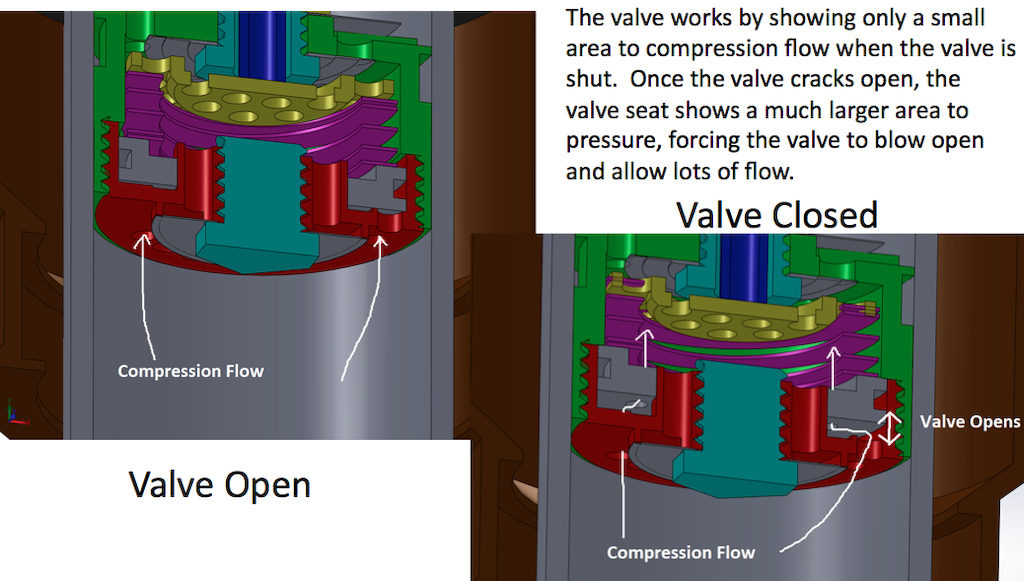 cut away of the Ohlins DFV  this is where it gets confusing to me. I`m sure the Penske stuff is probably leaps and bounds better than Ohlins, but they are both merely a system that allow extra amount of oil to flow when pressure builds? if the way they work is similar, then why is the curve so significantly different? Example of Penske Regressive damping on Trek Bikes  Ohlins DFV rear 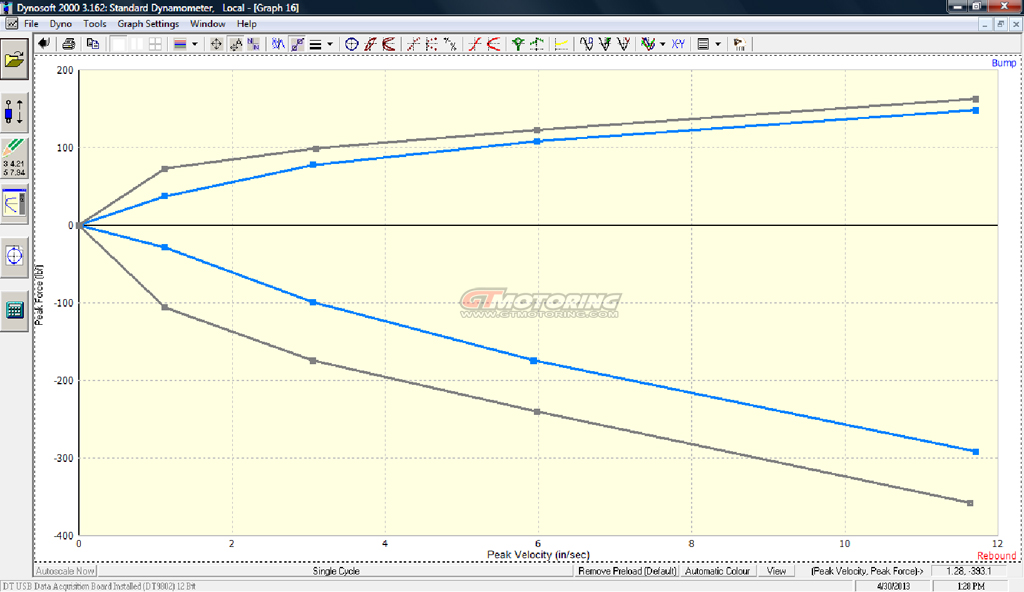 Again, I`m not debating which one is better, but just want to understand the system and the engineering behind the two more. Suspension gurus please chime in.
__________________
Build Thread of the "STI theme BRZ"http://www.ft86club.com/forums/showthread.php?t=61522
|
|
|

|
|
|
#2 |
|
BOXER FR
Join Date: Oct 2011
Drives: WRB BRZ Limited
Location: irvine, ca
Posts: 752
Thanks: 393
Thanked 335 Times in 171 Posts
Mentioned: 10 Post(s)
Tagged: 0 Thread(s)
|
found this in a youtube video response from the Trek guys:
Regressive and Digressive are very different things, especially when it comes to compression damping. Regressive damping is compression damping that momentarily DROPS in compression damping as shock velocities increase (when the shock becomes dynamic and continues to move) which allows it to respond to the impact and “shave” the top of the bump off. Regressive is very sensitive to shock velocities. When the shock begins to move and increases in velocity because of terrain input, the valve opens very quickly and there’s an initial drop in compression damping. As shock velocities continue to increase with further shock compression, the valve regains control and introduces progressive damping that offers high levels of damping control. You can see all of this in the dyno graphs that have been presented through the launch of the technology. Digressive damping is sensitive to compression force and not shock velocity – the valve opens at a specific force regardless of shock velocity. Additionally, digressive damping never decreases or increases in damping force and it’s essentially produces the same amount of damping force from when the valve opens to bottom out – for the most part it’s a flat damping curve. Digressive damping is limited in the ability to produce the efficiency, support and stability desired because as you increase that you also increase feedback and harshness. One thing you are correct on is that Digressive dampers have a tendency to blow through the travel and bottom out harshly – that's because of the flat damping curve they offer. And Digressive damping has been done before by many, but Regressive has not.
__________________
Build Thread of the "STI theme BRZ"http://www.ft86club.com/forums/showthread.php?t=61522
|
|
|

|
|
|
#3 |
|
BOXER FR
Join Date: Oct 2011
Drives: WRB BRZ Limited
Location: irvine, ca
Posts: 752
Thanks: 393
Thanked 335 Times in 171 Posts
Mentioned: 10 Post(s)
Tagged: 0 Thread(s)
|
[ame="https://www.youtube.com/watch?v=jP4Br1FCOBU"]RE:aktiv: All-new mountain bike suspension technology - YouTube[/ame]
__________________
Build Thread of the "STI theme BRZ"http://www.ft86club.com/forums/showthread.php?t=61522
|
|
|

|
|
|
#4 |
|
Junior
Join Date: Aug 2013
Drives: a car
Location: Probably at school
Posts: 4,341
Thanks: 3,184
Thanked 2,512 Times in 1,502 Posts
Mentioned: 20 Post(s)
Tagged: 0 Thread(s)
|
__________________
"Ah! What music! They could have never imagined, those pioneers who invented the automobile, that it would posses us like this, our imaginations, our dreams. Men love women, but even more than that, men love CARS!"-Lord Hesketh
|
|
|

|
| The Following User Says Thank You to cdrazic93 For This Useful Post: | wparsons (07-02-2015) |
|
|
#5 |
|
Frosty Carrot
Join Date: Jan 2013
Drives: The Atomic Carrot
Location: Baltimore, MD
Posts: 513
Thanks: 272
Thanked 428 Times in 199 Posts
Mentioned: 19 Post(s)
Tagged: 0 Thread(s)
|
Far from a guru... but as an engineer we take complex stuff and simplify it until things make sense. No matter how bogus the assumptions are.
Shim stack are blow-off valves. Build up enough pressure differential and you will deflect the shims and open the flow. Sure, you can build stacks that are digressive, linear, or progressive. You can even have 2 or 3 stage stacks. Normal tech. The system you're showing is 2-stage. Two elements in series. The big valve acts like a poppet valve. It controls flow to the high-pressure side of the shim stack. This poppet most likely has adjustable pre-load (like how the high-end Ohlins systems work). Additional pre-load keeps the poppet closed until a higher pressure builds. The characteristics of this damper are probably rigid at low speeds (low force), which creates plenty of stiffness and driver feedback during sweepers. During potholes and transitions, you get into high-speed behavior. The poppet opens, and flow is mostly controlled by the shim stack. Same as before, you can go digressive, linear, progressive, etc. The comparative stiffness and flow rates of Stage 1 and Stage 2 will make it possible to be "regressive." As some have said, low-speed damping is for the driver, high-speed damping is for the car. You get plenty of sporty feel without jarring your jibblies or over-working the tires.
__________________
If you think you're nerd enough, join in the discussions about Suspension and Aerodynamic modelling!
Wall of Fame - JDL Auto Design, Raceseng, Vishnu Tuning, Penske Shocks, Nameless, Perrin, RaceComp Engineering, Essex/AP Racing, Verus, RacerX Wall of Shame - aFe Takeda, Wilwood, FA20Club |
|
|

|
| The Following 4 Users Say Thank You to Shankenstein For This Useful Post: |
|
|
#6 |
|
Frosty Carrot
Join Date: Jan 2013
Drives: The Atomic Carrot
Location: Baltimore, MD
Posts: 513
Thanks: 272
Thanked 428 Times in 199 Posts
Mentioned: 19 Post(s)
Tagged: 0 Thread(s)
|
Ohlins DFV is more of a parallel circuit. 3 paths. Bleed, shim stack or DFV.
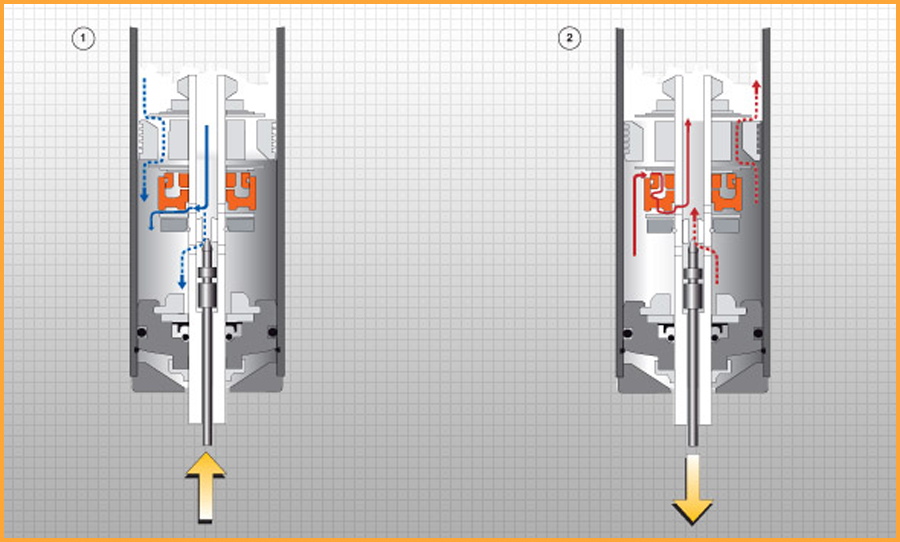 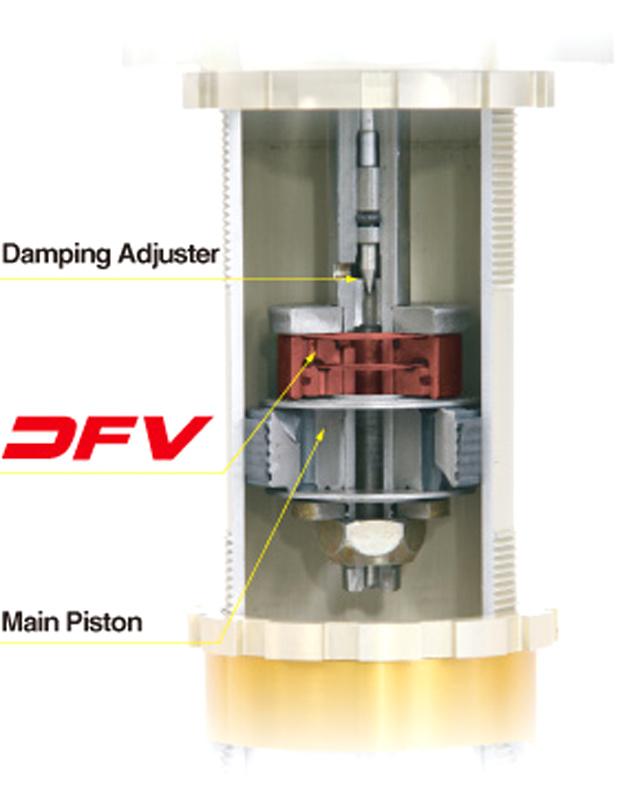 It looks like the DFV doesn't allow for much flow, but when it's acting... you probably get a 2-stage response. The shock dyno definitely looks like you're adding bleed. I'm guessing the DFV is what makes the smooth transition between bleed and main stack action. At full stiff, it's a fairly conventional damper. 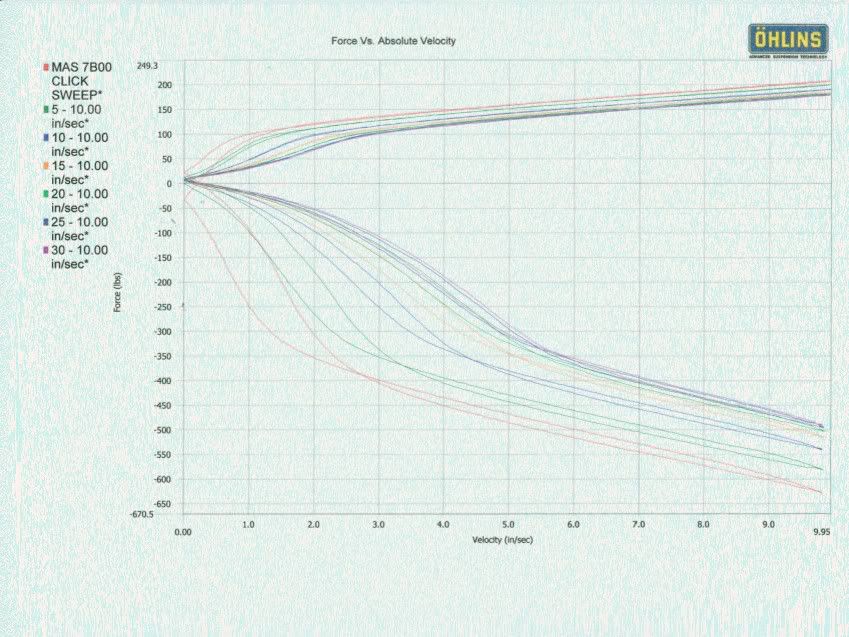
__________________
If you think you're nerd enough, join in the discussions about Suspension and Aerodynamic modelling!
Wall of Fame - JDL Auto Design, Raceseng, Vishnu Tuning, Penske Shocks, Nameless, Perrin, RaceComp Engineering, Essex/AP Racing, Verus, RacerX Wall of Shame - aFe Takeda, Wilwood, FA20Club |
|
|

|
| The Following User Says Thank You to Shankenstein For This Useful Post: | mokinbird87 (09-22-2015) |
|
|
#7 |
|
Junior
Join Date: Aug 2013
Drives: a car
Location: Probably at school
Posts: 4,341
Thanks: 3,184
Thanked 2,512 Times in 1,502 Posts
Mentioned: 20 Post(s)
Tagged: 0 Thread(s)
|
Oh god that was still kind of rough to decifer
 So being regressive is a property of the difference between atleast a two stage flow system? Rather than linear or progressive or digressive which can be in a single stage flow system?
__________________
"Ah! What music! They could have never imagined, those pioneers who invented the automobile, that it would posses us like this, our imaginations, our dreams. Men love women, but even more than that, men love CARS!"-Lord Hesketh
|
|
|

|
|
|
#8 |
|
Senior Member
Join Date: Jun 2014
Drives: S60R/Corvette
Location: Reading, PA
Posts: 104
Thanks: 4
Thanked 236 Times in 59 Posts
Mentioned: 7 Post(s)
Tagged: 0 Thread(s)
|
How did I miss this?! Shankenstein's explanation is good'nuff. The only thing I'd add is that we're finding the compression regression is obviously good for big bumps like kerbs and potholes but rebound regression can be equally amazing for maintaining tire contact patch loads over higher frequency inputs like bumpy (washboard) braking zones/corners.
And here is what real curves can look like. 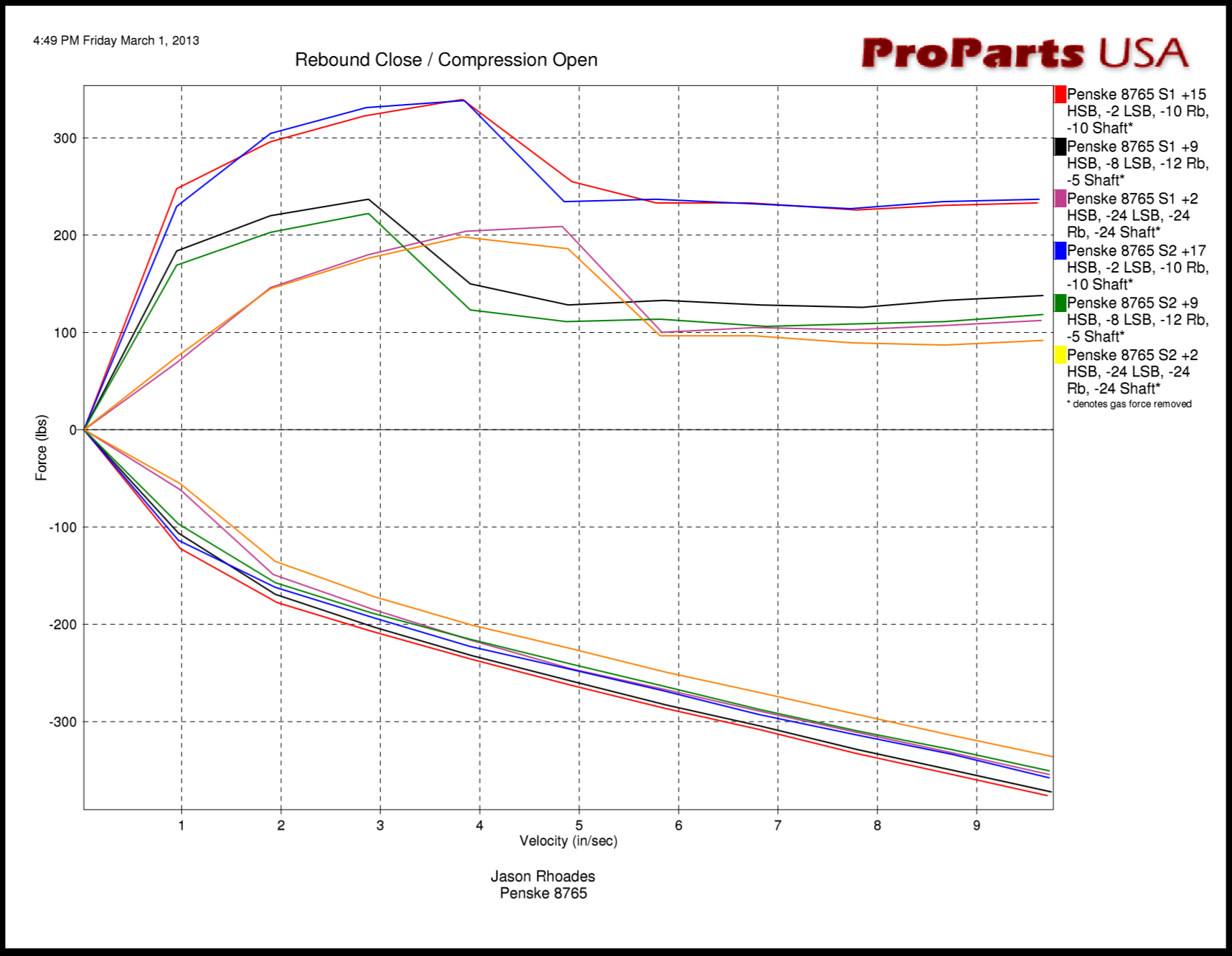
__________________
Ryan M.
Strange Engineering Director of Suspension Development |
|
|

|
| The Following 11 Users Say Thank You to RBbugBITme For This Useful Post: | BatStig (09-22-2015), bfrank1972 (09-23-2015), Calum (09-22-2015), cdrazic93 (09-22-2015), CSG Mike (09-22-2015), Dimman (01-08-2016), DocWalt (09-22-2015), fika84 (09-22-2015), mokinbird87 (09-22-2015), Racecomp Engineering (09-22-2015), Wepeel (09-23-2015) |
|
|
#9 |
|
Because compromise ®
Join Date: Jan 2012
Drives: Red Herring
Location: australia
Posts: 7,723
Thanks: 3,993
Thanked 9,346 Times in 4,127 Posts
Mentioned: 60 Post(s)
Tagged: 0 Thread(s)
|
@RBbugBITme
Why do you want less compression damping at higher piston velocities? I would have thought (not knowing anything about this stuff) you would want more damping to bring the speeds down.
__________________
My car is completely stock except for all the mods.
|
|
|

|
|
|
#10 | |
|
Because compromise ®
Join Date: Jan 2012
Drives: Red Herring
Location: australia
Posts: 7,723
Thanks: 3,993
Thanked 9,346 Times in 4,127 Posts
Mentioned: 60 Post(s)
Tagged: 0 Thread(s)
|
Quote:
[2] These don't look flat to me.
__________________
My car is completely stock except for all the mods.
|
|
|
|

|
|
|
#11 | |
|
Join Date: Jul 2012
Drives: S2000 CR
Location: Orange County
Posts: 14,531
Thanks: 8,920
Thanked 14,177 Times in 6,835 Posts
Mentioned: 966 Post(s)
Tagged: 14 Thread(s)
|
Quote:
If you run over a LARGE curb, the softer damping allows the spring to compress faster (less damping force for the compression), which allows just the wheel to move up, lengthening the impulse the wheel/damper will exert on the chassis, allowing the chassis to stay better settled. The same would apply for large bumps on the road. Although I wouldn't recommend trying it, a speed bump would be a great example where if you went over it at a higher speed than you really should, you won't feel it as much since most of the movement will be in the wheel instead of the chassis. |
|
|
|

|
| The Following 2 Users Say Thank You to CSG Mike For This Useful Post: | Captain Snooze (09-22-2015), mokinbird87 (09-22-2015) |
|
|
#12 | |
|
Senior Member
Join Date: Jun 2014
Drives: S60R/Corvette
Location: Reading, PA
Posts: 104
Thanks: 4
Thanked 236 Times in 59 Posts
Mentioned: 7 Post(s)
Tagged: 0 Thread(s)
|
Quote:
If your BRZ with linear valving is banging gears down a canyon road and you happen to hit a pot hole with your right front tire, your shock velocity will spike and you'll see a massive increase in damper force. This damper force will unsettle the chassis and effect tire loads on the other 3 tires as well as drastically increase tire load on the right front as it fights the pot hole. All of this is bad and sends you over the cliff. If you're in the same scenario with regressive damping on the right front corner, your right front tire load doesn't spike as much and your chassis/other tires won't be as affected by what the right front is doing. All of this is assuming you have enough stroke to absorb the pot hole without making mechanical contact/bottoming out. When you get close to that point you can almost stop caring about grip and you'll hit bump rubbers, hydraulic bump stops, or secondary pistons to save the damper from structural damage. As for something like a WRC damper, I can't imagine they'll ever run regressive on compression but they'll run it on rebound so the wheels can drop to full droop as fast as possible over every jump thereby giving them the most stroke possible for each jump landing.
__________________
Ryan M.
Strange Engineering Director of Suspension Development |
|
|
|

|
| The Following 7 Users Say Thank You to RBbugBITme For This Useful Post: | ajc209 (09-22-2015), BatStig (09-22-2015), Captain Snooze (09-22-2015), CSG Mike (09-22-2015), drewbot (09-22-2015), mokinbird87 (09-22-2015), Wepeel (09-23-2015) |
|
|
#13 |
|
BOXER FR
Join Date: Oct 2011
Drives: WRB BRZ Limited
Location: irvine, ca
Posts: 752
Thanks: 393
Thanked 335 Times in 171 Posts
Mentioned: 10 Post(s)
Tagged: 0 Thread(s)
|
damn it the more i learn about it the more i want it. i need a 2nd job or something haha.
__________________
Build Thread of the "STI theme BRZ"http://www.ft86club.com/forums/showthread.php?t=61522
|
|
|

|
| The Following User Says Thank You to mokinbird87 For This Useful Post: | chaoskaze (09-22-2015) |
|
|
#14 | |
|
BOXER FR
Join Date: Oct 2011
Drives: WRB BRZ Limited
Location: irvine, ca
Posts: 752
Thanks: 393
Thanked 335 Times in 171 Posts
Mentioned: 10 Post(s)
Tagged: 0 Thread(s)
|
Quote:

__________________
Build Thread of the "STI theme BRZ"http://www.ft86club.com/forums/showthread.php?t=61522
|
|
|
|

|
|
|
|
|
 |
|
|
 Similar Threads
Similar Threads
|
||||
| Thread | Thread Starter | Forum | Replies | Last Post |
| BRZ/FRS ABS Module/Pump/Valving | Grambi | Brakes, Suspension, Chassis | 4 | 08-22-2015 02:59 PM |
| More info on Penske shocks | ayau | Suspension | Chassis | Brakes -- Sponsored by 949 Racing | 156 | 04-28-2015 10:22 AM |
| Eibach R2 valving and spring rate question | owenxguo | Suspension | Chassis | Brakes -- Sponsored by 949 Racing | 0 | 06-10-2014 07:43 AM |
| Penske Coilovers. | miwialex | Suspension | Chassis | Brakes -- Sponsored by 949 Racing | 44 | 12-20-2013 08:17 PM |
| Penske 8300 vs Ohlins TTX36 | CSG Mike | Suspension | Chassis | Brakes -- Sponsored by 949 Racing | 45 | 09-12-2013 07:08 PM |